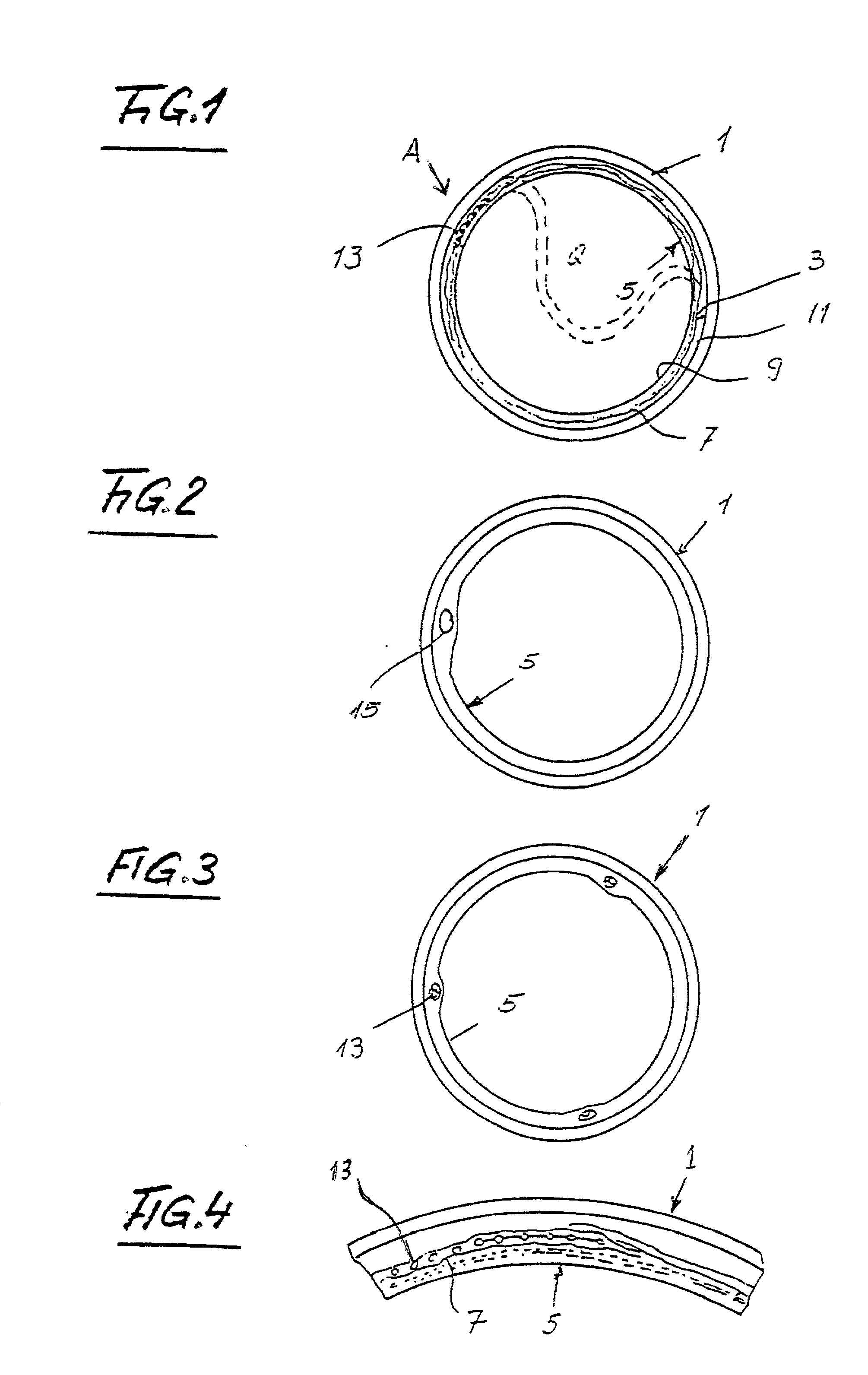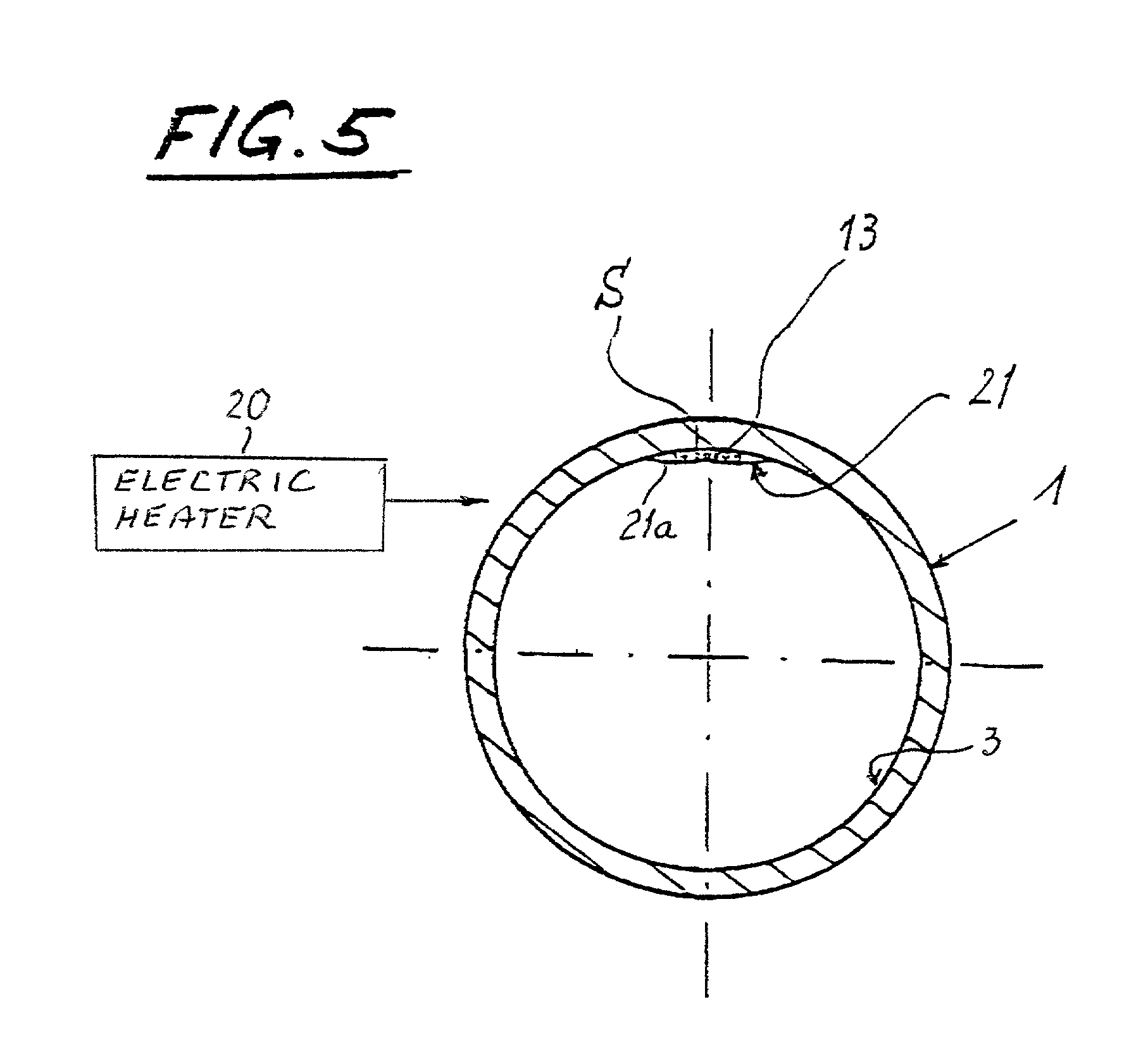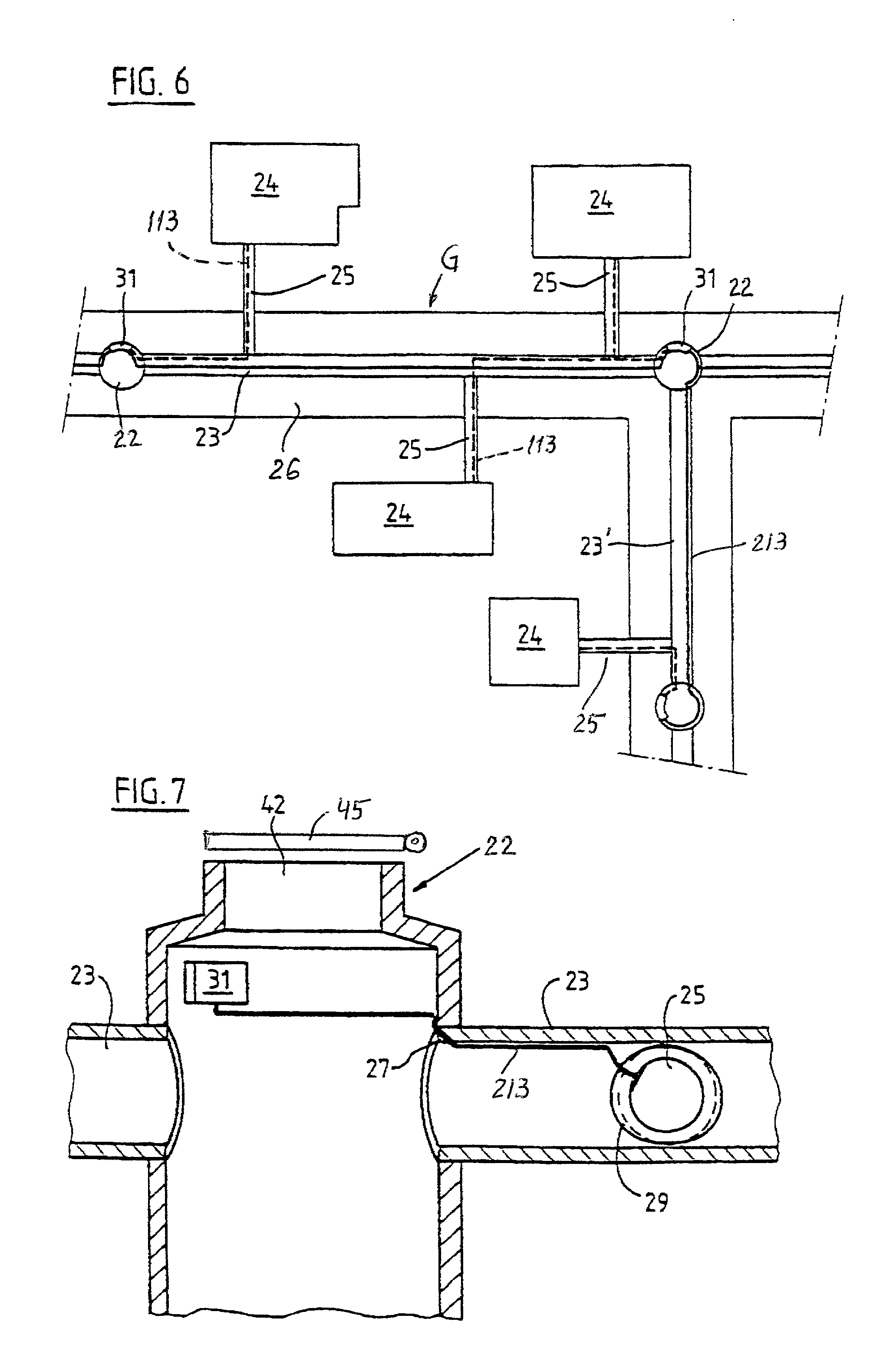Method of laying data cables and the like in underground pipes and pipe-cable combinations
a technology of underground pipes and data cables, which is applied in the direction of shaft linings, tunnel linings, pipe protection against damage/wear, etc., can solve the problems of clogging sewage pipes, linings are likely to be damaged, and use of liners can prolong the useful life of internal pressure or open underground pipes for many years
- Summary
- Abstract
- Description
- Claims
- Application Information
AI Technical Summary
Benefits of technology
Problems solved by technology
Method used
Image
Examples
Embodiment Construction
[0046] FIG. 1 shows a pipe 1 which consists of or contains concrete, steel, a synthetic plastic material, earthenware, glass or the like. Such pipe can be utilized to confine and convey water (such as rain water), liquid or partly liquid sewage or the like. The illustrated pipe 1 has a circular cross-sectional outline; however, it is equally possible to practice the method of the present invention by employing pipes having oval, square, rectangular or other polygonal cross-sectional outlines.
[0047] Initially (i.e., when new), the pipe 1 has a smooth internal surface 3. However, due to frictional engagement with conveyed floating sewage, corrosion, other types of wear, shaking, bending (such as that due to sinking of the ground beneath portions of or the entire pipe), etc., the pipe 1 can undergo more or less serious damage including the development of cracks, breaks, leaks and / or shifts at the junctions between the end portions of neighboring pipes and / or as a result of floating awa...
PUM
| Property | Measurement | Unit |
|---|---|---|
| angles | aaaaa | aaaaa |
| electric current | aaaaa | aaaaa |
| metallic | aaaaa | aaaaa |
Abstract
Description
Claims
Application Information
 Login to View More
Login to View More - R&D
- Intellectual Property
- Life Sciences
- Materials
- Tech Scout
- Unparalleled Data Quality
- Higher Quality Content
- 60% Fewer Hallucinations
Browse by: Latest US Patents, China's latest patents, Technical Efficacy Thesaurus, Application Domain, Technology Topic, Popular Technical Reports.
© 2025 PatSnap. All rights reserved.Legal|Privacy policy|Modern Slavery Act Transparency Statement|Sitemap|About US| Contact US: help@patsnap.com



